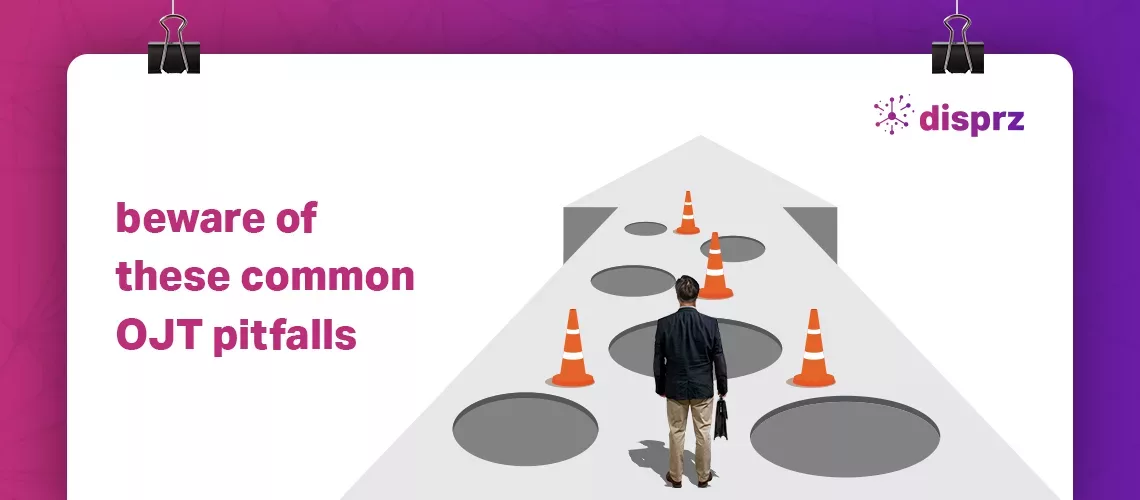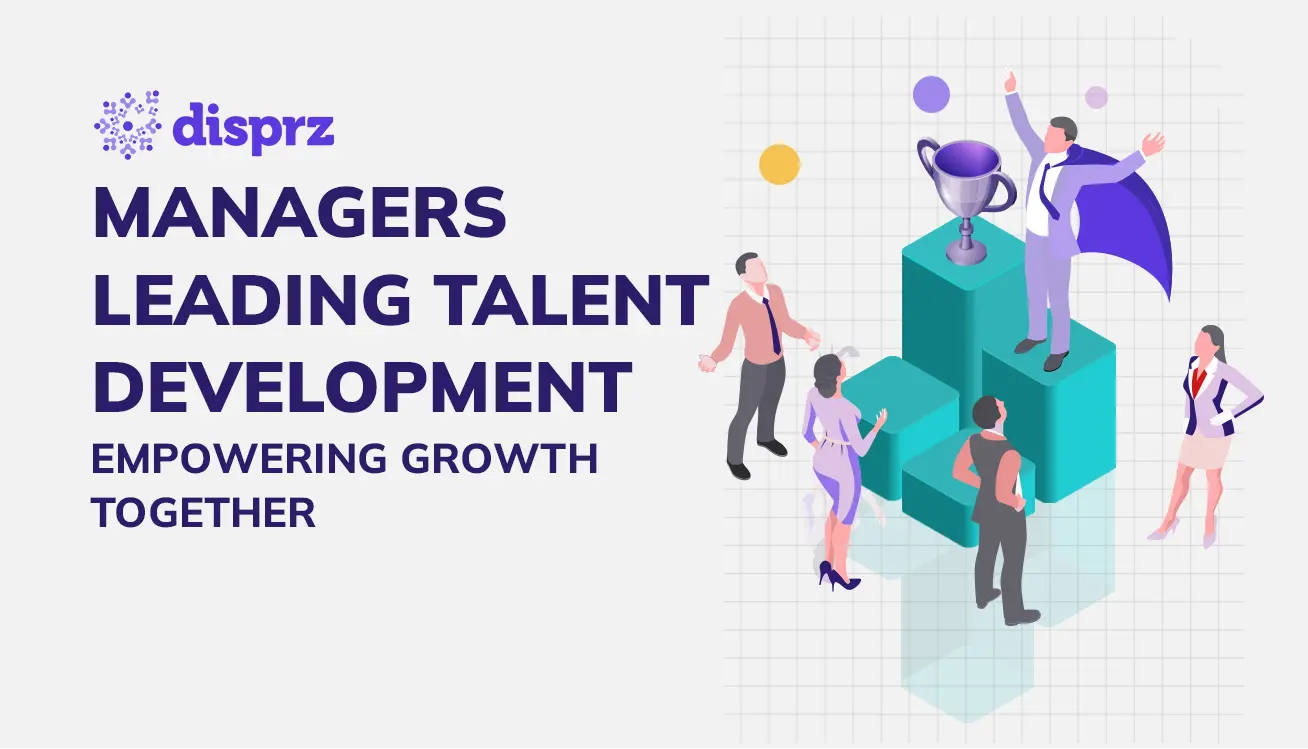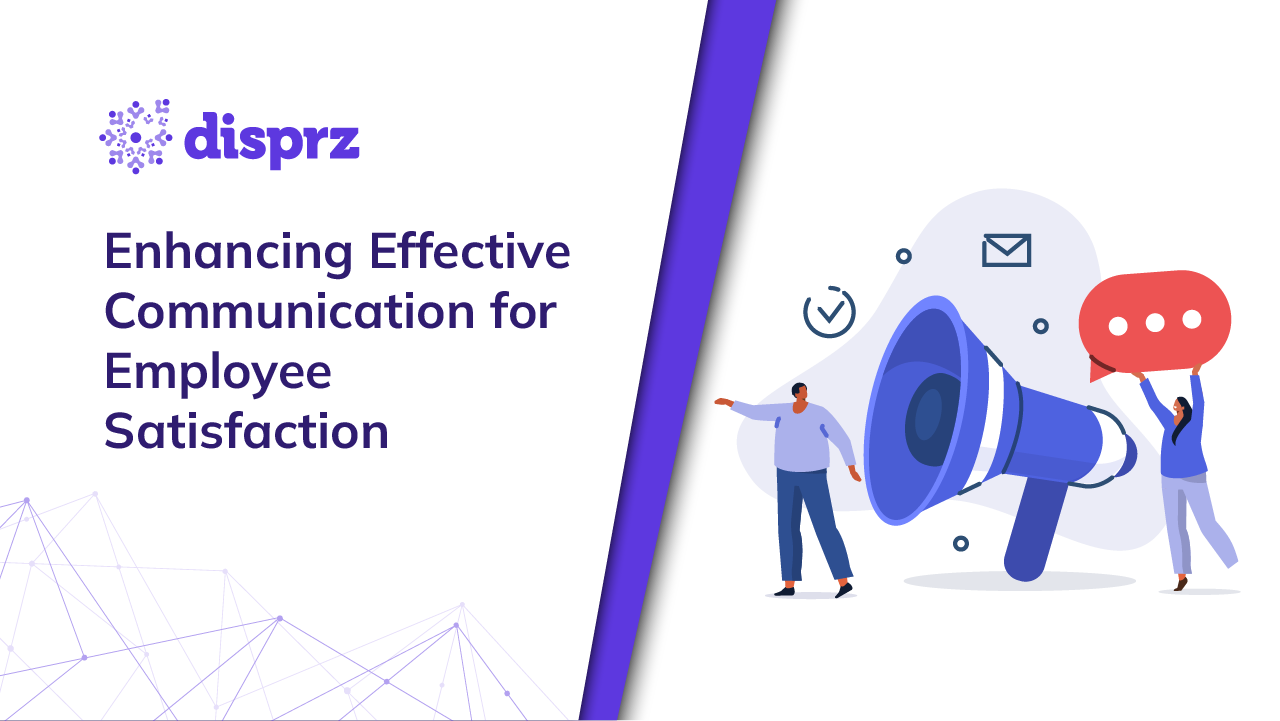
6 min read
• 16 Apr 2024
Guide to Avoid Top 6 OJT Mistakes in 2024 | Disprz
On-the-job training mistakes can impact employees’ productivity. Here are the solutions to avoid corporate training mistakes and make your OJT effective in 2024
-
eBookEmployee Upskilling - A Detailed Blueprint For Building A Skills-Driven Learning Culture
A research report underscores that companies prioritizing employee training witness a notable 24% increase in profits, surpassing those neglecting such investments.
Such statistics are a beacon of inspiration for training employees and cultivating a culture of high productivity. You are motivated to incorporate trends like on-the-job training (OJT) to build core competencies and create a talent pool brimming with high performers.
Unfortunately, despite the efforts put into embedding learning in the flow of work, the employees’ performance reviews tell a vexatious story. Yes! You surely wouldn’t expect this after investing substantial money and resources.
However, did you circle back and track the reasons for the failure of your OJT programs? We often focus on “what to do” and rarely pay attention to “what not to do.” The latter is equally vital. Small on-the-job training mistakes can significantly impact employees’ productivity.
Continue reading to discover the 6 on-the-job-training mistakes you must quickly address to drive the performance improvement you envisioned.
Avoid these 6 OTJ mistakes with New Employees
With a startling 41% of employees leaving due to poor job training within their first year, it's crucial to step up your training efforts.
Amidst the ongoing war for talent, where hiring a new employee is an arduous task, you wouldn’t want to lose your best employees due to inadequate training. Therefore level up your game to boost employee performance and retention by avoiding these common OJT pitfalls.
1. Recycling old training materials
Old training materials don’t fit in the modern business market that is highly volatile. Skills are changing rapidly, and outdated training materials won’t help employees develop new skills needed for the capricious market. Recycling the old material will only lead to wastage of time as employees won’t engage with it.
Solution – To avoid this OJT mistake, set up a process to keep training material up-to-date for motivating employees to learn on the job. Create a learning objective for your training materials. Learning objectives are critical for keeping training courses relevant and updated.
Maintain standard formats, but ensure the content is enhanced regularly.
Below are a few ways to do it:
- Stay abreast with the latest industrial trends and identify trending skills
- Keep a tab on software updates or changes in procedures/products
- Take regular feedback from the employees to understand what they think about your on-the-job training content
- Once you amass the above data, tweak the content to increase employee engagement and participation
2. Missing the point
The on-the-job training will probably be neglected if it is too theoretical or not in tandem with the company’s bottom line and employees’ aspirations. Not being pragmatic is an expensive training mistake that you should consider avoiding.
Solution – Personalize your OJT programs and convey to your employee “What is in it for them.” Employees often have a lot on their plate; they need strong reasons to invest time in learning during work hours. Hence it is imperative to tailor training programs to each employee’s unique interests, personal goals, and skill gaps.
Below are a few essential steps for creating personalized learning experiences
- Determine the skills needed to be successful at a particular job
- Measure the proficiency level of the employee in each skill through self and manager assessment
- Have one-to-conversation to understand the employees’ learning needs and aspirations
- Design courses based on the skill gap and need analysis
Read how Deloitte transformed their workforce training with Disprz LXP, enhancing personalized learning.
3. Underutilizing social learning
The siloed approach to learning is one of the most common on-the-job training mistakes. It blocks opportunities for peer-to-peer learning, which is paramount for knowledge sharing in the workplace.
Solution – Boost collaborative productivity by leveraging social learning. In the last two years, the pandemic has taught us that traditional learning and skilling techniques are no longer enough. A modern approach like social learning is essential to ensure continuous learning in the face of uncertainty.
Why Social Learning?
Social learning helps create a collaborative space to share knowledge and grow as an organization. It is an opportunity to learn from every nook of the organization and even every corner of the globe (if you have a distributed workforce). Employees show more interest in brainstorming and sharing ideas or experiences with peers rather than listening to an instructor.
Below are a few best practices for making the most of social learning
- Outline specific goals and guidelines for social learning to encourage meaningful conversation
- Conduct polls and quizzes to engage everybody
- Provide topics to contemplate and debate every day
- Have a leaderboard to strike healthy competition
Read how a top insurance company leverage Disprz AI-powered platform and enhanced their on job training outcomes.
4. Ignoring continuous improvements
Most L&D professionals create a learning journey and leave it in the past. They rarely measure the effectiveness of their learning programs. So, they are often stuck in the vicious cycle of disappointment for continuously using the ineffective approach that’s not reaping desired results.
Solution – Evaluate your OJT programs to determine whether it is helping employees gain relevant knowledge and apply the same to improve their performance. When it comes to on-the-job training, it is essential to ensure that you are getting the most out of your investments. Hence track the OJT data to ensure employees are properly trained and equipped with the essential skills to do their jobs efficiently.
Below are a few essential OJT metrics you need to track:
- Course Adoption
- Course completion
- Learner’s satisfaction
- Learning outcome
- Implementation in routine work
- Performance improvement
5. Follow up & Track Progress
To assess the upskilling program as a whole to see if it achieved its goals and was successful. You may assess the success of your training and development initiatives with employee training software, as was previously indicated. It is possible to analyze the efficiency of your upskilling program and the knowledge or skill acquisition after it by keeping an eye on key performance indicators (KPIs) such course completion rates, training progression rates, assessment scores, shrinking skill gap analysis, improved competence or productivity, etc.
To assess the efficacy of your training, think about utilizing the following metrics
Post-training employee feedback
This is useful in assessing whether your staff were able to acquire new abilities as a result of the training. Additionally, it provides valuable insights into areas for improvement in future training sessions.
Assessments
Following upskilling training programs, employees' abilities, knowledge, and learnings are assessed through tests, quizzes, and demonstrations. These assessments help gauge the effectiveness of the training and identify any gaps that need to be addressed.
Post-training job proficiency
Keep an eye on your staff to see if they're using the new abilities to their regular work. Moreover, observe if there's an increase in productivity or efficiency attributable to the acquired skills, indicating the practical application of training outcomes.
6. Choosing the wrong platform
Most companies either rely on email, messengers, or age-old technologies to provide learning in the flow of work. This is a significant on-the-job training mistake. While these platforms might appear as cheaper options, they fail to support on-the-job training by disseminating essential information at the time of need.
Solution – Embrace an advanced learning and skilling platform like the Learning Experience Platform (LXP) that enables you to drive impactful on-the-job training programs at scale. The right platform allows you to break down your L&D programs into multiple modules or learning paths. In this way, you can focus on developing different capabilities for employees to improve their performance.
With the right AI-powered LXP, you can:
- Integrate learning into the flow of work by creating a personalized learning pathway
- Ensure timely dissemination of knowledge with relevant content recommendations
- Focus on end-to-end skilling, from skill identification to skill building
- Measure OJT effectiveness with in-depth analytics
- Open doors for collaboration through social learning
Conclusion
Investing in employee training is essential for profitability, but avoiding common on-the-job training mistakes is crucial. To ensure OJT success, update training materials regularly, personalize programs to meet employees' unique needs, and embrace social learning for knowledge sharing. Continuously evaluate training effectiveness with metrics such as course completion and learner satisfaction. Lastly, choose the right platform, like Disprz’s AI-powered Learning experience platform to facilitate timely knowledge dissemination, personalized learning pathways, and comprehensive analytics.
Disprz is a complete skilling suite that enables enterprises to win in the digital-first world by onboarding, right-skilling, and unlocking the potential of employees. Be it knowledge or frontline workers, this AI-powered solution is designed smartly to bridge the skill gaps of the workforce across the board.
About the author

Debashree Patnaik
Debashree is a seasoned content strategist at Disprz.ai, specializing in enterprise learning and skilling. With diverse experience in B2B and B2C sectors, including ed tech, she leads the creation of our Purple papers, driving thought leadership. Her focus on generative AI, skilling, and learning reflects her commitment to innovation. With over 6 years of content management expertise, Debashree holds a degree in Aeronautical Engineering and seamlessly combines technical knowledge with compelling storytelling to inspire change and drive engagement.
More Resources
4 min read
• 15 Apr 2024
Unlocking the Power of Managerial Engagement in Talent Development
4 min read
• 09 Apr 2024
Nurturing Excellence in Building Leadership Pipelines
4 min read
• 09 Apr 2024
Improving “Employee Experience” For Organizational Growth
Sign up to get free resources and stay up to date with Disprz!
Discover how Disprz can align learning and upskilling with your desired business outcomes.





